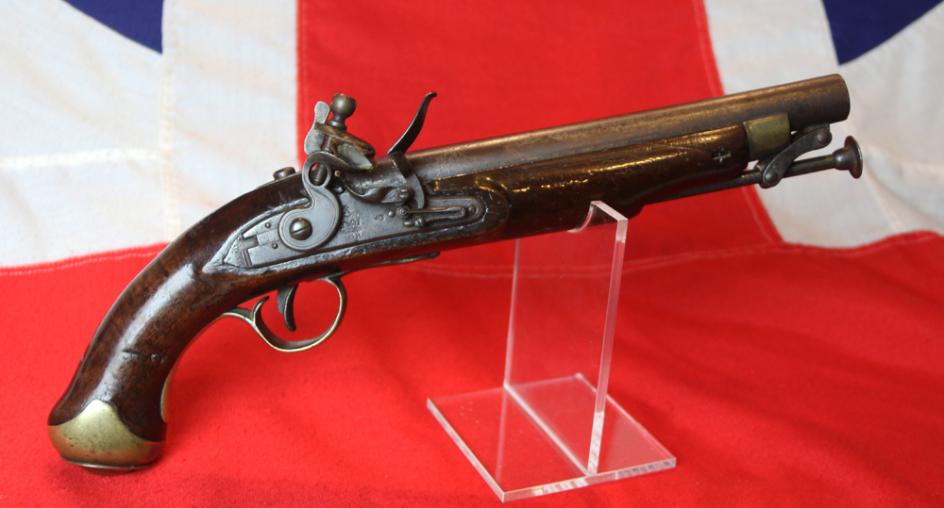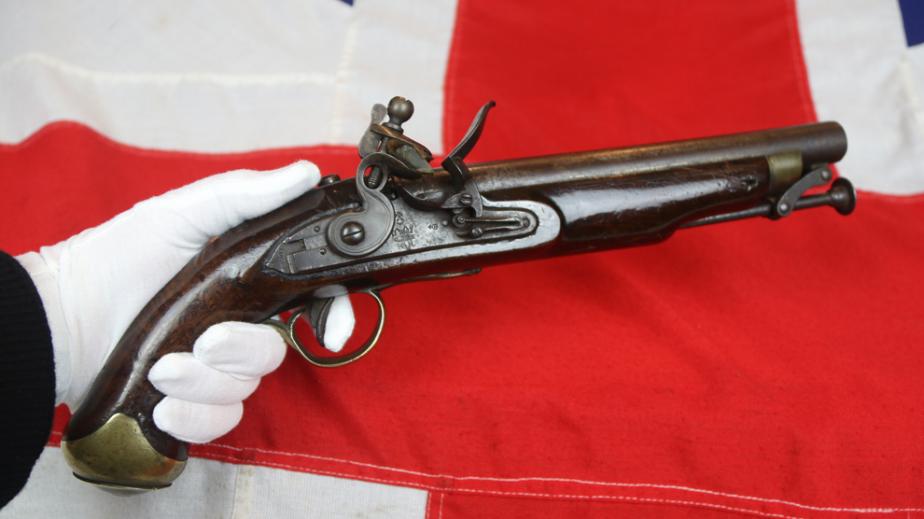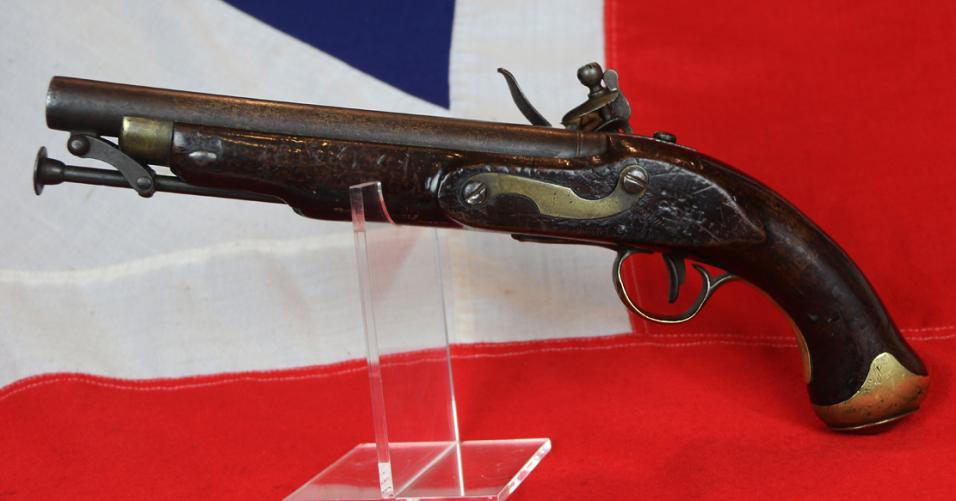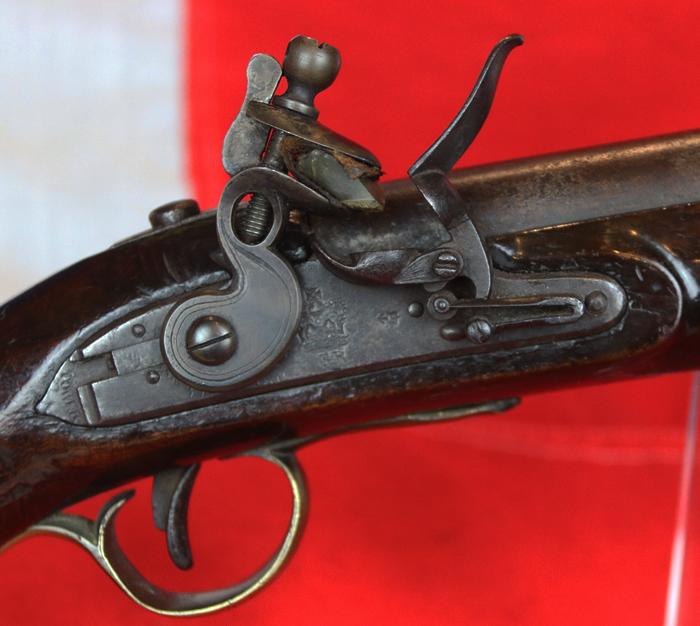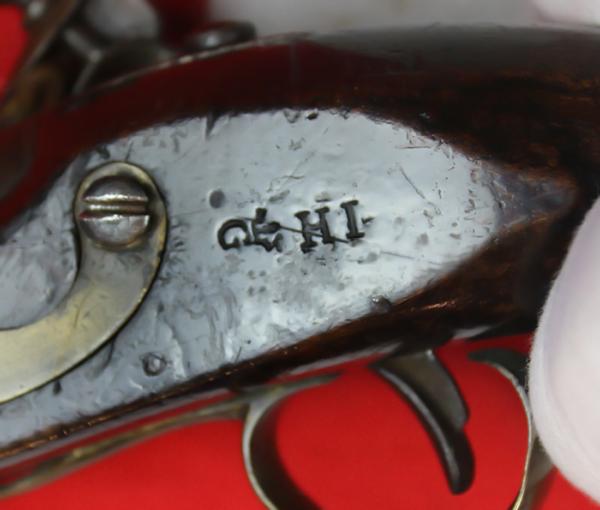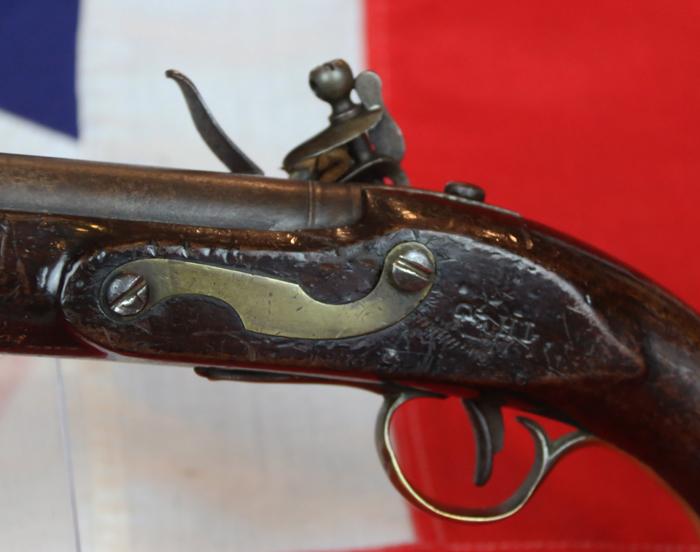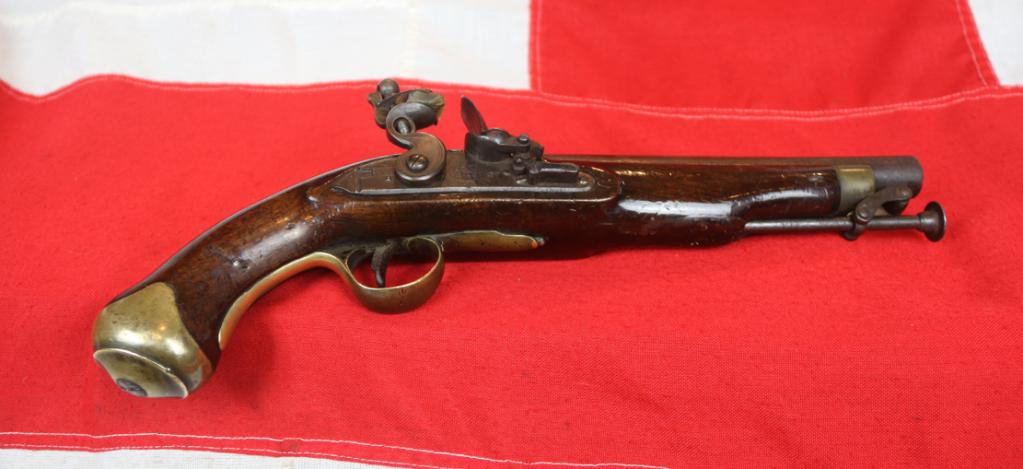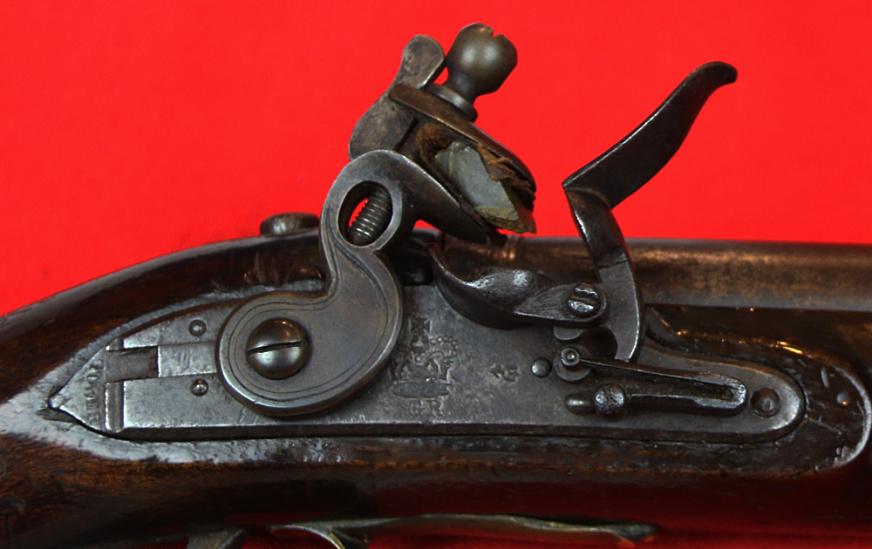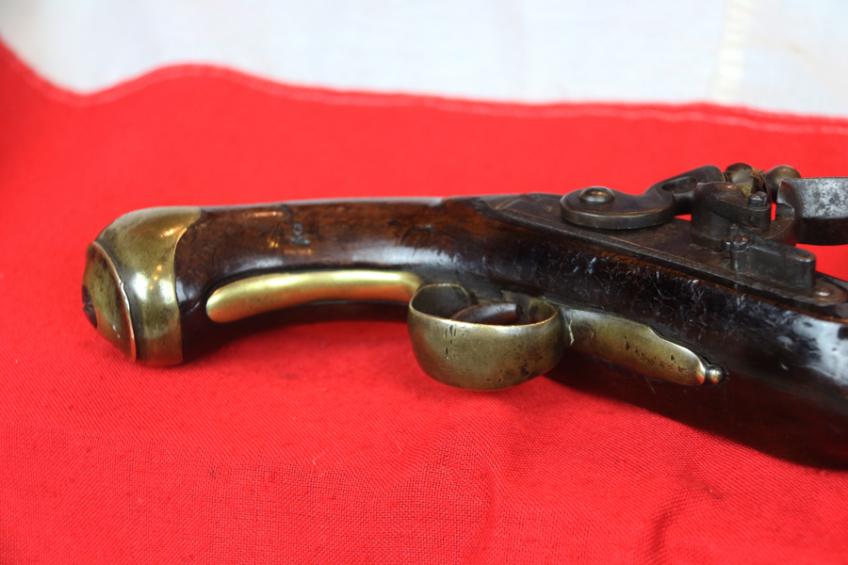A Fine 1802 Tower of London New Land Pattern ‘G.R.Crown’ Lock Napoleonic Wars Light Dragoon Trooper's Flintlock Pistol. Used From The Peninsular War To The Battle of Waterloo Period.
Excellent walnut stock with original patina, numerous Board of Ordnance inspection stamps and crown stamps, crown G inspection stamp to stock. Traces of large GR crown stamp to lock face plus inspection stamp. Stock stamp as well. All fine brass fittings and captive ramrod. In original flintlock with rolling frizzen, and made at the Tower of London and used by the front line British Cavalry regiments during the Peninsular War, War of 1812, and the Hundred Days War, culminating at Waterloo. One would have to go a long way and for a considerable time to find another example in as good condition and as good quality as this one. Introduced in the 1796 and in production by 1802, the New land Cavalry Pistol provided one model of pistol for all of Britain's light cavalry and horse artillery. Another new element was the swivel ramrod which greatly improved the process of loading the pistol on horseback.
The service of British Cavalry regiments, particularly the Light Dragoons, proved essential in the mastery of the Indian Subcontinent. The Duke of Wellington, then Arthur Wellesley, was primarily recognized for his military genius by his battles in India. Of particular note was the Battle of Assaye in 1803 where the 6000 British faced a Mahratta Army of at least 40,000. During the engagement the 19th Light Dragoons saved the 74th Regiment by charging the enemy guns 'like a torrent that had burst its banks'. Pistols firing and sabre slashing, the 19th broke the enemy's position and the day was won. 19th Light Dragoons gained "Assaye" as a battle honour, and the nickname "Terrors of the East". The 19th Light Dragoons eventually served in North America during the War of 1812 and so did this form of pistol. Cavalry was the 'shock' arm, with lance and saber the principal hand weapons. The division between 'heavy' and light was very marked during Wellington's time: 'heavy' cavalry were huge men on big horses, 'light' cavalry were more agile troopers on smaller mounts who could harass as well as shock.
During the Napoleonic Wars, French cavalry was unexcelled. Later as casualties and the passage of years took their toll, Napoleon found it difficult to maintain the same high standards of cavalry performance. At the same time, the British and their allies steadily improved on their cavalry, mainly by devoting more attention to its organization and training as well as by copying many of the French tactics, organization and methods. During the Peninsular War, Wellington paid little heed to the employment of cavalry in operations, using it mainly for covering retreats and chasing routed French forces. But by the time of Waterloo it was the English cavalry that smashed the final attack of Napoleon's Old Guard. As with all our antique guns no license is required as they are all unrestricted antique collectables
Code: 23349
2235.00 GBP

